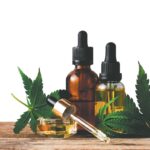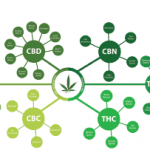The survey revealed several key insights. Nearly 60% of respondents scored in the high-knowledge range regarding cannabis, yet 40% had notable gaps in understanding. These gaps affected rheumatologists’ comfort in discussing cannabis with patients and recommending it.
In this survey, respondents were clustered into three groups based on their attitudes toward cannabis: 1) progressive, 2) traditional and 3) unsure. Each group demonstrated distinct views on cannabis as a therapeutic tool:
- Progressive group: Representing 32% of respondents, the progressive group was the most open to cannabis use. Nearly 90% believed in cannabis’s potential to replace opioids for chronic pain management, and 58% reported recommending CBD to patients for symptom relief.12
- Traditional group: This conservative cluster (40% of respondents) was less likely to see cannabis as an opioid alternative, with only 49% supporting this use. Just 38% recommended CBD, reflecting a more cautious approach due to the lack of long-term evidence.
- Unsure group: Making up 28% of the sample, the unsure group was marked by a high level of indecision; over half felt uncomfortable discussing cannabis, and most were undecided about its use as an opioid alternative.
This attitudinal divide affects clinical interactions. Without clear guidance, patients may resort to trial-and-error experimentation with cannabis, potentially choosing consumption methods and dosages without a firm understanding of what may work best for their condition, which could lead to over consumption of cannabis and/or cannabis use disorder. These findings underscore the importance of targeted cannabis education in medical training, as well as the need for more standardized recommendations in rheumatology.
Pharmacology
Cannabinoids, such as THC and CBD, modulate the body’s endocannabinoid system, which plays a role in pain perception, inflammation and immune function.13 THC binds to CB1 and CB2 receptors, reducing pain perception and inflammatory responses, which can benefit patients with inflammatory-driven conditions.14,15
CBD, by contrast, indirectly enhances endocannabinoid activity, modulating pain and inflammation through additional receptor pathways without psychoactive effects.14
The prevailing theory is that cannabinoids may help reduce central sensitization, potentially easing widespread pain and fatigue.13
It is essential that those who provide patient care in rheumatology understand the nuances of cannabinoid pharmacology. Different methods of consumption, such as smoking, vaping and oral ingestion, vary in onset time and duration of effect, which may impact symptom management. For example, smoking and vaping provide rapid onset but come with respiratory risks, while oral products offer a prolonged effect with a slower onset.16 We need to be equipped with this knowledge to guide patients who may be considering cannabis as an adjunctive treatment.



